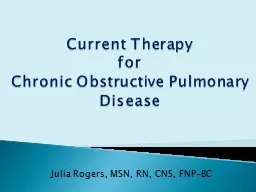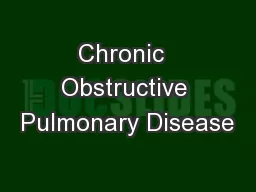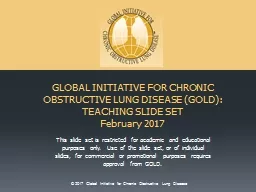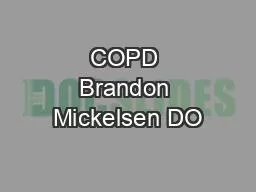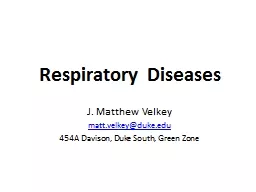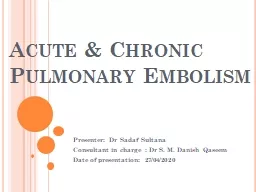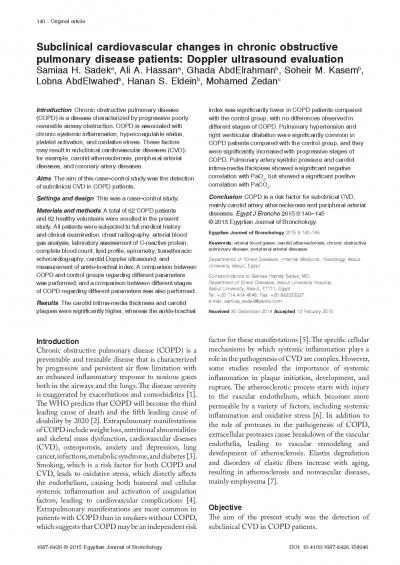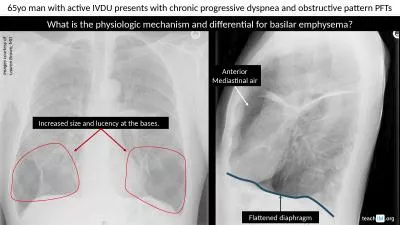PPT-Current Therapy for Chronic Obstructive Pulmonary Disease
Author : alexa-scheidler | Published Date : 2018-03-12
Julia Rogers MSN RN CNS FNPBC Diagnosis and Overview Therapeutic Options Manage Stable COPD Manage Exacerbations Airway and systemic inflammation Underrecognized
Presentation Embed Code
Download Presentation
Download Presentation The PPT/PDF document "Current Therapy for Chronic Obstructive..." is the property of its rightful owner. Permission is granted to download and print the materials on this website for personal, non-commercial use only, and to display it on your personal computer provided you do not modify the materials and that you retain all copyright notices contained in the materials. By downloading content from our website, you accept the terms of this agreement.
Current Therapy for Chronic Obstructive Pulmonary Disease: Transcript
Download Rules Of Document
"Current Therapy for Chronic Obstructive Pulmonary Disease"The content belongs to its owner. You may download and print it for personal use, without modification, and keep all copyright notices. By downloading, you agree to these terms.
Related Documents

